Did you know that each state has a Marian Patroness? The Miraculous Medal Shrine went on an internet adventure across the United States to discover as much information as we could about each state. For some, Mary’s patronage is based on a specific location (i.e., Our Lady of Las Vegas) others are named after titles of Mary given in the Litany of Loreto (i.e., Our Lady, Queen of All Saints), and still others after Marian doctrine or Church-approved apparitions (i.e., Immaculate Mary or Our Lady of Lourdes).
We did as thorough an investigation as possible into each state and its connection to Mary’s title. If you have a story or information about your state’s Marian patronage, contact us at communications@cammonline.org and let us know. We’ll be happy to publish new discoveries in our next issue.
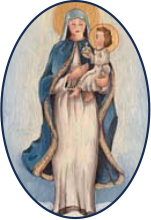
Alabama – Our Lady of the Gulf
The area now known as Alabama was originally part of the Diocese of Quebec. The early French and Spanish explorers settled in Mobile in 1702 and have a parish register dating back to 1704. While the state of Alabama is honored with the patronage of Our Lady of the Gulf, only three churches in the United States are named after this title of Mary, and all are located on the Gulf of Mexico. The two oldest date back to the mid-1800s: Bay St. Louis, Mississippi (1847), and Port Lavaca, Texas (1857).
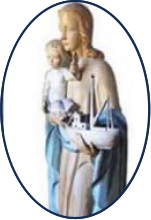
Alaska – Our Lady of the Kodiak and the Islands
Like Our Lady of the Gulf, this title of Mary is specific to its location. While Catholics have been in the Aleutian Islands since 1920, Russian missionaries brought the love of our Blessed Mother to the area in the late 1700s. The statue of Our Lady of the Kodiak and the Islands was made in Oberammergau, Germany, for St. Mary’s Catholic Church in Kodiak, Alaska. Her infant Son is carried in her right arm, and she holds a “shuyak” (a Kodiak fishing boat) in her left hand.
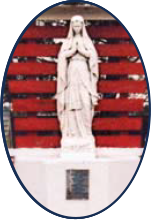
Arizona – Our Lady of the Highways
Our Lady of the Highways is a more recent title of Mary’s. However, one Oblate of St. Francis de Sales priest points out that our Blessed Mother traveled quite a bit during her life, going to Egypt, Jerusalem, and even Ephesus, Turkey—just to name a few.
The earliest record of devotion to Our Lady of the Highways was started by Fr. Giles Lawlor, OFM, who, along with Fr. John Joseph McLaughlin, was driving to their annual retreat in June 1936 when a car collided with theirs. Fr. Giles survived without serious injuries, but Fr. McLaughlin was killed. A few months prior to the accident, Fr. Giles had started the Miraculous Medal Novena in his parish, and he wanted to build a shrine thanking Mary for sparing his life. The shrine was dedicated to Our Lady of the Highway, and in September 1937, a medal was made with the inscription “Our Lady of the Highway, be with us on our journey; for all thy ways are beautiful and all thy paths are peace.”

Arkansas – Our Lady of the Holy Souls
In 1541, the first Catholics arrived in the area that would later become Arkansas. But it wasn’t until 1700 that the first (recorded) Mass was held in the area. In 1927, the third Bishop of Little Rock named one of the mission churches after his devotion to the Blessed Mother and the holy souls. It is the only church in the United States with this title of Our Lady. Interestingly, the Purgatoire River (“purgatoire” being the French word for “purgatory”) joins the Arkansas River (a major tributary of the Mississippi River) in the county of Las Animas (which means “the souls”) in Colorado. It’s all interconnected.
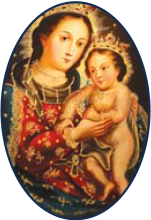
California – Our Lady of Refuge, Our Lady of the Wayside
Our Lady of Refuge (Refugium Peccatorum) is a title of Mary that dates back to the 8th century. On January 4, 1843, Francisco Diego Garcia y Moreno, the first Bishop of Southern California (Mexico) proclaimed Our Lady of Refuge as the as patroness of the Californias. In his declaration he asked, “With so great a patroness and protectress, what can we not promise ourselves? What can be wanting and whom need we fear?”
Our Lady of the Wayside is the patron saint of travelers.
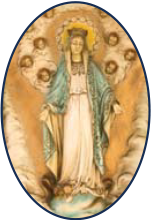
Colorado – Immaculate Mary
While the Catholic Church always believed that Mary was Immaculate (totally pure), Pope Pius IX declared this as dogma in 1854, and Mary, conceived without sin, was declared patroness of the United States in 1846. On Christmas Eve in 1860, the first Mass in Denver was celebrated at St. Mary’s church (the first Catholic church in Denver). Eight years later, it became the city’s Cathedral. A temporary Cathedral was built in a separate location in 1890 and was dedicated as the Cathedral of the Immaculate Conception in 1912. There are five Catholic churches named after Mary’s Immaculate Conception in the state.
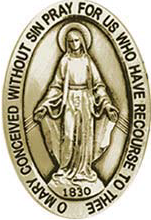
Connecticut – Notre Dame of Easton
The word “Connecticut” is based on the Algonquian word “Quinnehtukqut,” which refers to the Connecticut River. The first Catholic church was built in 1827, even though there was a Catholic presence from the area’s colonial beginnings. “Notre Dame of Easton” (Our Lady of Easton) is a Catholic church in the town of Easton. Although the town dates back to 1863, the parish was founded in 1956.
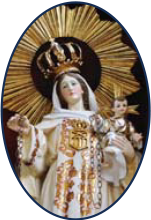
Delaware – Our Lady of Mercy
Mary’s title of “Our Lady of Mercy” stems from her apparition to St. Peter Nolasco in 1218. In her appearance to him, she asked that he start a religious Order to free the many Christians imprisoned by the Moors. Six hundred years later, in 1829, Catherine McAuley dedicated her congregation of sisters to Our Lady of Mercy. The first sisters to arrive in the United States arrived in 1843; they quickly spread throughout the United States, including Delaware. In 1928, the Society of St. Joseph (Josephites) established Our Mother of Mercy parish on French Street in Wilmington, DE.

Florida – Our Lady of La Leche
Our Lady of the Milk dates back to the Roman catacombs, where Mary was depicted nursing her Divine Son. This devotion to Mary became very popular in Spain after miracles occurred when praying for Mary’s intercession under this title. When the Spanish came to Florida in the 16th century, they brought their love for Nuestra Señora de La Leche y Buen Parto (Our Lady of the Milk and Good Delivery) with them, and created the first shrine to our Blessed Mother in (what would become) the United States.
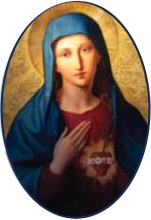
Georgia – Immaculate Heart of Mary
The devotion to Mary’s Immaculate Heart began in the Middle Ages, but its popularity skyrocketed after our Blessed Mother presented the Miraculous Medal to St. Catherine Labouré in 1830. Mary’s Medal depicts, on the back, an image of both, Mary’s Immaculate Heart and Jesus’ Sacred Heart.
Eighty seven years later, when Mary appeared to the three young children in Fatima, she told them that devotion to her Immaculate Heart would bring peace to the world and save souls. Spanish Catholic presence in Georgia began in the 16th century, but after British control, Catholics were no longer welcomed.
In 1755, when 400 French Catholic families were banished from Nova Scotia, they arrived in Georgia only to have their children given to Protestant families to raise. Two hundred years later, the diocese of Atlanta was established and dedicated to the Immaculate Heart of Mary.
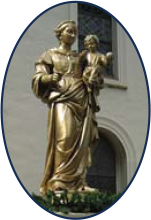
Hawaii – Our Lady, Queen of Peace and Star of the Sea
The title of Mary as Star of the Sea is an ancient one, dating back to the 8th century chant, “Ave Maris Stella” (Hail, Star of the Sea). Without the stars to guide them, ancient sailors would be lost. The Church has always taught that, like the stars, Mary guides us, too—and she always leads us to Christ. The title of Our Lady, Queen of Peace dates back to 16th century France, when Jean de Joyeuse gave his wife a statue of Mary holding an olive branch in her right hand, with Jesus, the Prince of Peace, seated on her lap. The Cathedral Basilica of Our Lady of Peace (Malia o ka Malu Hale Pule Nui in Hawaiian), is in the Diocese of Honolulu and is the oldest cathedral in continuous use as a cathedral in the United States.

Idaho – Our Lady of Limerick
The statue of Our Lady of Limerick was commissioned in 1640 in reparation for the martyrdom of Sir John Burke of Brittas, Ireland. The statue was carved in Belgium and then donated to the Dominicans of St. Mary’s parish in Limerick. During Cromwell’s siege of Limerick in 1651, the statue was removed from the church for safety, placed in a coffin, and buried.
One hundred thirty years later, after the Papists Act of 1778, the coffin was unearthed and the statue was found in perfect condition. In 1915, across the world in Idaho, parishioners with connections to Ireland built a brick church that honored Our Lady of Limerick; it is on the National Register of Historic Places.

Illinois – Our Lady of the Universe
From 1674 to 1784, the area of Illinois was under the Quebec diocese. Not until 1875 was the first diocese in Illinois established (in Peoria). Almost 100 years later, Pope Pius XII instituted the Feast of the Queenship of Mary for the universal Church, requesting the world to “renew its consecration to her” every year on August 22. The title of Mary as “Queen of the Universe” was first used in the Vatican II document, Lumen Gentium. And in 1974, in the diocese of Joliet, the first shrine named after the Queen of the Universe was officially established.
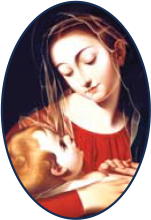
Indiana – Our Lady of Providence
Our Lady of Divine Providence was first depicted by painter Scipione Pulsone around 1580. It was placed in the church of San Carlo ai Catinari in 1664, and as people flocked to the shrine, many graces and miracles were reported.
A hundred years later, the Confraternity of Our Lady of Providence was authorized by Pope Benedict XIV (it was raised to an Archconfraternity in 1839). In 1925, a chaplain of the Sisters of Providence brought an image of Our Lady of Providence to the United States from Italy, at which point the Sisters canonically erected the National Shrine of Our Lady of Providence at Saint Mary of the Woods in Indiana.
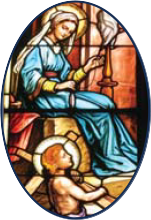
Iowa – Mary of Nazareth
As scripture tells us, Jesus was raised in Nazareth, and Mary was in Nazareth when the Angel appeared to her. According to Pope Emeritus, Benedict XVI, “The house of Nazareth is a school of prayer where we learn to listen, to meditate, to penetrate the deepest meaning of the manifestation of the Son of God, drawing our example from Mary, Joseph and Jesus.” From 1674 until 1762, the area of Iowa was part of the Diocese of Quebec. In 1832, the first settlers moved into eastern Iowa, and after 1835, (Venerable) Fr. Samuel Mazzuchelli, OP, helped create the first Catholic churches in what is currently the Davenport diocese. There are only three churches in the United States named after Mary (or Our Lady) of Nazareth.
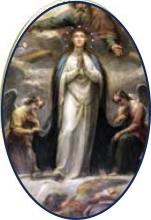
Kansas – Mary, Queen of the Angels
Mary, Queen of the Angels dates back to a chapel in Assisi, Italy (200 years prior to St. Francis) where angels reportedly appeared. The first Mass in the U.S. was offered in present-day Kansas by Franciscan Fr. Juan de Padilla in 1541 (who would also become the first martyr in the U.S). Almost 300 years later, Jesuits created a mission at Sugar Creek, where the survivors of the Trail of Death had settled. Two years later, (St.) Rose Philippine Duchesne and her Congregation established a school for girls. St. Rose made a powerful impression on the Potawatomi people, who referred to her as “the woman who prays always.” There are two churches in Kansas named after Mary, Queen of the Angels: in Fort Scott (first built in 1864) and Russell.
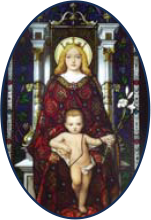
Kentucky – Mary, Mother of God
Mary’s title “Mother of God” was declared by the third Ecumenical Council in Ephesus in 431. Over 1,400 years later, the Mother of God Catholic Church in Covington was founded in 1841; it was the second Catholic church to be established in Northern Kentucky. Its official title is “Annunciation of the Ever Virgin Mary, Mother of God,” and its beauty and history have helped place it on the National Register of Historic Places.
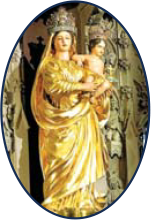
Louisiana – Our Lady of Prompt Succor
Our Lady of Prompt Succor is the Patroness of Louisiana – and New Orleans – specifically because of her role in saving New Orleans from the British in 1815. In that battle, the Americans were outnumbered and untrained, yet against all odds, they won. Read more about this battle and Mary’s role in our country’s history.
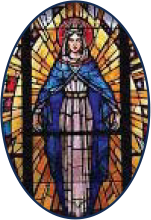
Maine – Our Lady of Peace
Maine is the only New England state with roots that go back to the first French settlement: Holy Cross in 1604. By 1629, the pilgrims had a trading post, and in 1635, the Capuchin Franciscans started the mission of Our Lady of Hope. At its very beginnings, however, the Boothbay Peninsula was a largely Protestant area. Prior to Our Lady Queen of Peace church being built, Mass was held at a variety of locations, including the opera house.
After its construction, President John F. Kennedy and his sister Patricia were known to attend Mass when they were in the area. (See Hawaii to learn about Our Lady of Peace)
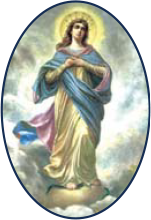
Maryland – Our Lady of the Assumption
The Assumption of the Blessed Virgin Mary (Mary’s body and soul being taken into heaven) is the oldest Feast of our Blessed Mother, dating back to Apostolic times. This belief was officially defined as dogma by Pope Pius XII in 1950.
It’s only fitting that the oldest Catholic Cathedral in the United States is dedicated to this Feast. The Basilica of the National Shrine of the Assumption of the Blessed Virgin Mary in Maryland is the first Catholic cathedral built after the implementation of the U.S. Constitution in 1789.
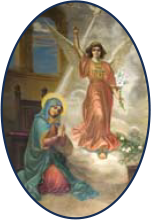
Massachusetts – Our Lady of the Incarnation
The Incarnation of Our Lord occurred at the Annunciation, when Mary gave her “Yes” to the angel. At that moment, she became the Mother of God—who willingly became human while remaining Divine. Until the year 1780, when the Massachusetts Constitution permitted Catholics to practice their religion, Catholicism was illegal. In 1788 the first public Mass was offered in Boston and by 1808, the Diocese of Boston was established. The parish of the Incarnation of Our Lord and Savior Jesus Christ in Melrose was founded in 1958 by Richard Cardinal Cushing.

Michigan – Our Lady, Gate of Heaven
The Catholic Church in Michigan goes back to the 17th century when St. Isaac Jogues and Charles Raymbaut visited northern Michigan. Throughout the following years, chapels were built throughout the territory, and in 1701, the Basilica of Sainte Anne de Détroit was founded (it’s the second oldest continuously operating Catholic church in the U.S.). Mary’s title “Gate of Heaven” is found in the Litany of Loreto, which dates back to 1531. But even before the 16th century, the early Church fathers saw Mary as the way to the Way, and a holy gate to God. St. Ambrose (4th Century) said that Mary is the gate of Paradise and holds its keys.
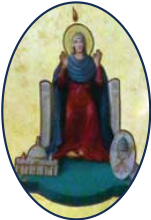
Minnesota – Our Lady, Mother of the Church
The title of Mary as “Mother of the Church” (Mater Ecclesiae) was first used by St. Ambrose in the 4th Century. Many of the early Church Fathers viewed Mary as the Mother of Jesus and mother of the Body of Christ, the Church.
And, in 2018, Pope Francis put the obligatory Memorial of Mary, Mother of the Church, on the General Roman Calendar. The diocese of Minnesota and the Dakotas was established in 1850, and the Basilica of Mary, Mother of God (now called the Basilica of St. Mary) became the first basilica in the United States. The church Mary, Mother of the Church, was founded in Burnsville in 1965 by Archbishop Leo Binz, and the first Mass was celebrated four years later.
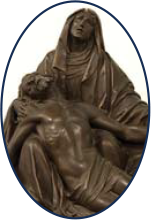
Mississippi – Our Lady of Sorrows
Our Lady of Sorrows is based on the prophecy of Simeon (Luke 2:25-35) and on the profound union of heart that Mary had with her Divine Son throughout His Passion. St. Mary Basilica Natchez, Mississippi, is a minor basilica and is the oldest Catholic church still in use in the state. Construction began in 1842, and the church was dedicated to Mary, Our Lady of Sorrows, on December 25, 1843. This stunning basilica is on the National Register of Historic Places.
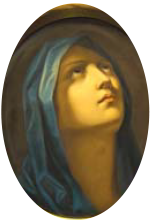
Missouri – Our Lady of Calvary
Our Lady of Calvary and Our Lady of Sorrows look at the Passion and Death of Jesus Christ through the eyes of His Mother. Both are associated with the Way of the Cross and Mary standing at Calvary, “by the Cross of Jesus” (John 19:25). In Starkenburg, Missouri you can find a lovely Shrine to Our Lady of Sorrows that dates back to 1847, when Germans from the nearby town of Hermann settled there. A log church dedicated to St. Martin was built, and in 1890, the parish purchased a replica of the Pietá statue in the Cathedral of Muenster. Visitors and pilgrims came to see the statue, where Mary showered them with favors and miracles.

Montana – Our Lady of the Pines
Montana held a crucial place in fur trading due to the Lewis and Clark Expedition. In 1811, the first Catholics settled in in the area, but because of the lack of priests, Mass and reception of the Sacraments were irregular. In the 1840s, Fr. Pierre Jean de Smet and other Jesuits established St. Mary’s Mission. Fr. De Smet became a trusted friend to the Iroquois, later becoming a mediator between the Native Americans and the government. There are only eight Churches and one Retreat Center in the U.S. named “Our Lady of the Pines.” One of them is in the small town of West Yellowstone, the “Gateway” to Yellowstone Park. The Church was finished in 1950, and in 1998 the stained glass windows were replaced with ones that meld glass from Germany, France, and the United States.
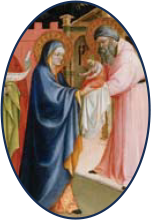
Nebraska – Our Lady of the Presentation
The Feast of Our Lady of the Presentation was originally known as the Feast of the Purification of the Blessed Virgin, or Candlemas. It refers to the day the Mary and Joseph brought Jesus to the Temple to present Him to God (Lk 2:22). Thirteen years before the establishment of the Lincoln Diocese, the church of the Presentation of the Virgin Mary held their first Mass in 1874 in a house made of sod. In 1878 a church was built, but in 1891, it was destroyed by fire. The new building, which was constructed in 1891, still stands today.

Nevada – Our Lady of Las Vegas
The town of Las Vegas, which is Spanish for “the Meadows,” was settled in 1905 and incorporated in 1911. But the first Mass held in the area was offered by a Franciscan priest on the Colorado River in 1776. Originally, the territory was within the diocese of Sonora, Mexico, but after 1840, it became part of the Monterey diocese in California.
It wasn’t until 1995 that the vast Diocese of Reno-Las Vegas was split into two separate dioceses. Our Lady of Las Vegas has one church named after her.
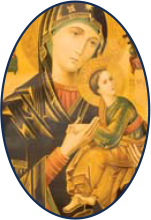
New Hampshire – Our Lady of Perpetual Help
The icon of Our Lady of Perpetual Help was originally in the Panagia Kera Kardiotissa Monastery in Crete. Fr. Buondelmonti, an Italian Franciscan priest, visited Crete in 1415, and wrote about this miraculous icon. It was stolen from the monastery in 1498, and in 1499, it appeared in the church of San Matteo in Italy, where it was venerated by the public. The first Mass in New Hampshire was celebrated by Jesuit missionaries in 1694. There were two churches named after Our Lady of Perpetual Help in the state. One was built around 1900 in Chocorua, New Hampshire; the other was built in 1911 in Manchester. In 2006, the one in Manchester was unified with St. Anthony parish. In 2001, the church in Chocorua was closed.
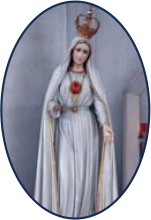
New Jersey – Our Lady of Fatima
From the early 17th century, Catholic immigration to New Jersey was socially and legally discouraged. It wasn’t until 1844, when the state constitution granted liberty to all religions, that Catholics were allowed civil rights. Almost 100 years later, Our Lady appeared to three young children in the town of Fatima, Portugal. She asked them, and everyone else, to pray the Rosary daily for peace in the world, and to offer sacrifices and penances for the salvation of souls. She promised world peace if people would listen to her messages. Today, Our Lady of Fatima is the patroness of New Jersey. Not only are five churches named after her, the World Apostolate of Fatima and its shrine on 150 acres of land, is also located in New Jersey.
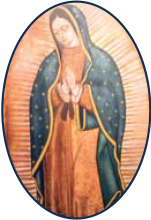
New Mexico – Our Lady of Guadalupe
Our Lady of Guadalupe is the patron saint of the Diocese of Gallup, New Mexico. Throughout the state, you can find countless depictions of her and just as many religious organizations and churches named in her honor, including: a Shrine, 14 Churches, one cemetery, two Monasteries, one Abbey, and the Franciscan Province Headquarters. (Read about our shrine to Our Lady of Guadalupe)
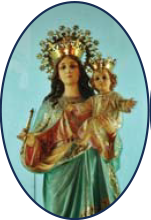
New York – Our Lady, Help of Christians
The first person to refer to Mary as “Help of Christians” was St. John Chrysostom in 345. Over 1,200 years later, Pope Pius V invoked her intercession at the Battle of Lepanto. In the state of New York, there are two shrines named after Our Lady Help of Christians: the National Shrine in Stony Point, and the historic Shrine of Maria Hilf Zu (German for Mary, Help of Christians) in Cheektowaga.
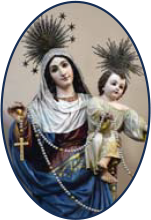
North Carolina – Our Lady of the Holy Rosary
In the 16th century, Hernando de Soto travelled through North Carolina in his explorations, but the first mention of Catholics in the area occurred in 1737. As in many of the early colonies, Catholics didn’t receive the same civil liberties as Protestants until after independence from Britain. Our Lady of the Rosary church in Louisburg was given its name by the parishioners in 1999. Committed to the Rosary, they still pray it before Sunday Masses, and in October, their special statue of Mary visits every home so the families can pray their rosary before her image. Tradition states that Mary herself gave St. Dominic the Rosary to refute the errors of Albigensianism; from that point on, he was quite effective in bringing souls to Christ.
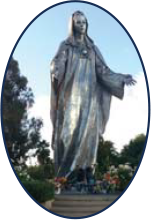
North Dakota – Mary, Queen of Peace
In 1848 Fr. George Belcourt arrived in North Dakota after battling the Hudson Bay Company’s fur trade monopoly and trying to establish an open market where the indigenous peoples could also trade. He and Fr. Pierre Jean de Smet worked tirelessly to bring God’s love and peace to the area.
Known as the “Peace Garden State,” North Dakota has two churches named after Our Lady, Queen of Peace: one in Dickinson and one in Almont. In 1969 Pope Paul VI wrote, “Nothing seems more appropriate and valuable to us than to have the prayers of the whole Christian family rise to the Mother of God, who is invoked as the Queen of Peace, begging her to pour forth abundant gifts of her maternal goodness in the midst of so many great trials and hardships.”
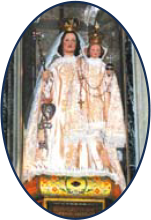
Ohio – Our Lady of Consolation
Catholics have turned to Mary to console them since the beginnings of the Church. The title of Our Lady of Consolation (also known as Consoler of the Afflicted), is part of the Litany of Loreto. The Basilica and National Shrine of Our Lady of Consolation is in Carey, Ohio. It dates back to 1868, when it began as the church of St. Edward. In order to complete the construction of the church, the parishioners prayed to Our Lady of Consolation, and promised to rename the church in her honor once it was completed. It contains a replica of the statue of Our Lady of Consolation from the Cathedral of Luxembourg.

Oklahoma – Our Lady, Queen of All Saints
Missionaries and explorers passed through the area of Oklahoma as early as the 16th century, but the first Catholic church wasn’t built until 1872. Twelve years later, in 1889, the first church named after our Blessed Mother was built. Our Lady, Queen of All Saints, is a mission church in the town of Sayre, approximately 130 miles west of Oklahoma City. Like many of Mary’s other titles, Queen of All Saints is in the Litany of Loreto.

Oregon – Our Lady of the Woods
The Archdiocese of Portland is the second oldest Archdiocese in the country (after Baltimore). It was established as a Vicariate-Apostolic in December 1843; it became the Archdiocese of Oregon City in July 1846. During that three-year time span, a thousands of immigrants arrived from the East Coast, and the Bishop of Quebec was asked to send English-speaking priests to the area.
The Church of Our Lady of the Woods in Birkenfeld, Oregon, was built as a mission of St. Helens Parish in 1921 and dedicated the same year.
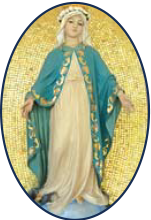
Pennsylvania – Our Lady of the Miraculous Medal
Mary appeared to St. Catherine Labouré in 1830 in Paris, France, to give the world her Miraculous Medal. Immediately, miracles began to occur, and thousands of Medals were produced.
Almost 100 years later, Fr. Joseph Skelly, CM, built the Miraculous Medal Shrine in what was then called the Chapel of the Immaculate Conception. Read the history of Mary’s beautiful Miraculous Medal Shrine.
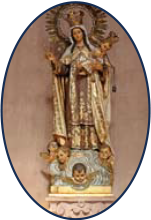
Rhode Island – Our Lady of Mount Carmel
In 1872 the Diocese of Providence was established, but Catholics had lived in Rhode Island since the 17th century, when the area was founded as a place of religious tolerance (however, Catholics were not permitted full citizenship until 1783). At the end of the 1800’s, Italian immigrants brought their devotion to Our Lady of Mount Carmel with them, which included a grand procession on her Feast Day (that tradition continues to this day).
The church of Our Lady of Mount Carmel was founded in 1917.
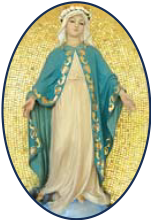
South Carolina – Mary the Virgin Mother
Although the first Mass in the area of South Carolina was most likely offered during the de Soto exploration in the 16th century, after the English arrived, Catholicism was prohibited. However, in 1788 an Italian priest celebrated the first Mass in Charleston, the seventh oldest Catholic district in the United States. St. Mary’s, the first Catholic church in the Carolinas, was established in 1789, and over 150 years later, the church of Mary the Virgin Mother was built. It was the first church in Hartsville, and the plans and materials for it were purchased through a Sears Roebuck catalog.

South Dakota – Our Lady of the Prairie
The French Canadian fur traders brought Catholicism to the area of South Dakota, and Fr. Pierre Jean de Smet continued to plant seeds of peace and friendship when he traveled through the region. But it wasn’t until 1876, when Fr. Martin Marty, a Benedictine Abbot, came to the area that the Church was firmly rooted. The word “prairie” comes from the French word “praerie,” which means “meadow.”
Aptly, churches and shrines named after Our Lady of the Prairie can be found amongst the American grassy meadows. And in South Dakota, a 7′ statue called “Madonna of the Prairie” stands off of highway 79, reminding drivers of her intercession and her Divine Son’s continued presence with us.

Tennessee – Our Lady of Lourdes
Although Catholics had traveled through Tennessee since its beginnings, there were no missions or settlements until 1800, when 100 Catholic families were noted as living in Hawkins County. Since 1899, Our Lady of Lourdes parish, initially a mission, has been gracing the community of Eastern Tennessee. More recently, Mary’s patronage has blessed the diocese of Nashville, beginning in 1944. Not only is Our Lady of Lourdes the patroness of Tennessee, she’s also invoked for protection from disease.
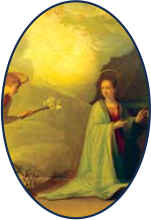
Texas – Our Lady of the Annunciation
The Spanish made their first settlement near El Paso in 1682, and by 1784, Franciscan missionaries had established 36 missions. In 1857, Polish settlers moved to southern Texas and built the Church of the Annunciation in the town of St. Hedwig. Eleven years later, in the city of Houston, the Church of the Annunciation was started, but because of the Civil War, it wasn’t finished until 1873. It is the first and oldest surviving church in that city and is listed in the National Register of Historic Places. Read about the Annunciation in Fr. Joseph Skelly’s 1953 article.

Utah – Our Lady of the Snows
Near the Snowbird Ski Resort in the Wasatch Mountain Range is an inconspicuous Catholic chapel named Our Lady of the Snows. The first chapel, built in 1960, was the victim of two avalanches within a 10-year span. The second chapel is made of concrete, and due to its remote location, also functions as a community center. The title Our Lady of the Snows is based on the miraculous snow that fell in Rome on August 5, 352 after a childless couple decided to make Mary the heir of their fortune. They asked her for a sign of what she wanted, and that night — in the middle of summer — she sent a snowfall that covered the ground in the shape of a church.

Vermont – Our Lady of Grace
The origin of the state of Vermont dates back to 1609, when the Catholic explorer Samuel de Champlain described the area as “Voilà les monts verts!” which translates to “Here are the green mountains!” St. Isaac Jogues also journeyed through Vermont a number of times while travelling from New York to Quebec. The title Our Lady of Grace has a number of origins. The first one is biblical and refers to Luke 1:28 where the Angel calls Mary “Full of Grace.” The others date back to 1297 in England, 1440 in France, 1610 in Vienna, and the front of the Miraculous Medal, given to us by Mary herself in 1830.

Virginia – Our Lady, Queen of the Apostles
After the Act for Establishing Religious Freedom was put in force (in 1785), Catholic communities began sprouting up in the territory of Virginia. A few years later, President George Washington himself contributed to the fund for constructing the first Catholic parish in the Commonwealth. That original brick building was given the name Church of St. Mary. In the Vatican II document, Apostolicam Actuositatem, Mary is called “Queen of the Apostles.” After her Son’s death, the apostles gathered with our Blessed Mother, praying as our Lord requested while waiting for the descent of the Holy Spirit.

Washington – Our Lady of Good Help
Roman Catholics were the earliest explorers in the Pacific Northwest. The first Mass in the area was offered in 1838, and the St. James Cathedral was dedicated in 1851 in Vancouver, Washington.
In 1865, Fr. Francis Prefontaine, a French Canadian priest born in Quebec, was assigned to the Puget Sound area. He asked the Bishop for permission to build a church in Seattle, then cleared the ground himself and built the first church in Seattle, named after the oldest chapel in Montreal: Our Lady of Good Help.
In 1903, it became the pro-Cathedral. That same year, St. (Mother) Frances Xavier Cabrini came to Seattle to help the large population of Italian immigrants and established the Mount Carmel Mission and school.

West Virginia – Our Lady of Victory
In 1821, the first Catholic church in West Virginia was built in Wheeling and named in honor of St. James, but the presence of Catholics dates back to the years following the American Revolution. During colonial times, the practice of Catholicism was illegal and the hostility towards Catholics was open. After the Act for Establishing Religious Freedom was ratified, Catholics began settling in the Shenandoah Valley.
In 1903, Our Lady of Victory church in Gary, West Virginia, was built. The town of Gary, in central Appalachia, was a prominent steel town where immigrants came to work in the coal mines. Read about Our Lady of Victory.

Wisconsin – Our Lady of the Americas
While Catholics had traveled through the Wisconsin area since the 17th century, it wasn’t until 1825 that a log church-school was built. It was destroyed by a fire, but another church was built in a different location in 1831; it’s the oldest continuing parish in Wisconsin. (Venerable) Fr. Samuel Mazzuchelli, OP, came to the area in 1830 and established 18 parishes in Wisconsin alone before his death in 1864. The shrine of Our Lady of Guadalupe (also referred to as Our Lady of the Americas) can be found in La Crosse. In 1999, Pope (St.) John Paul II named Our Lady of Guadalupe as Patroness of the Americas. Read about Our Lady of Guadalupe.

Wyoming – Our Lady of the Valley
The word “Wyoming” is claimed to have a few different etymologies, all of which boil down to “large plains.” In 1840, Fr. Pierre Jean de Smet offered the first Catholic Mass near Horse Creek, and in 1887, the Diocese of Cheyenne was established. It included the National Parks of Yellowstone and Grand Teton. Throughout Europe and the United States, Mary’s title of “Our Lady of the Valley” is fairly common in areas with large plains. Our Lady of the Valley church is a small mission in Clark, Wyoming.
Subscribe to receive a print version of the Miraculous Medal Message
Your subscription to the Message supports the mission and good works of the Miraculous Medal Shrine and the Vincentians of the Eastern Province.
By becoming a donor, you will receive a print copy of the magazine two times per year.
Click here to become a member.

